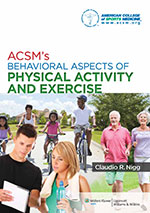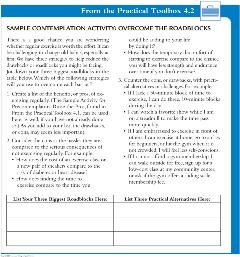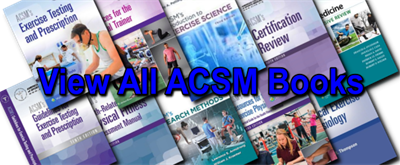ACSM |
June
18, 2020

MOVING BEYOND CONTEMPLATION
The following client strategies and download are highlights from ACSM’s Behavioral Aspects of Physical Activity and Exercise, Chapter 4, Building Motivation: How Ready Are You?

When a client is in the Contemplation stage, they are getting ready to take action, so encouraging them to rush to adopt regular exercise before they are ready is likely to be ineffective. The real risk for a Contemplator is that they will get stuck in “chronic” Contemplation because they are ambivalent. They see the value of adopting regular exercise but are still acutely aware of the barriers or drawbacks. To help them keep moving forward, encourage them to take small steps. Being successful with those small steps will build their confidence and help them see the benefits of exercise more clearly.
Contemplation: Key Intervention Strategies
Make the Pros Outweigh the Cons
- Ask client to name his or her most significant con(s). Acknowledge changing does have costs but avoid debate about whether change is “worth it.”
- Ask clients to shrink cons by:
- Comparing them to their growing list of pros.
- Asking how important cons are relative to pros.
- Challenging themselves to overcome the cons.
Consciousness Raising — Become Informed
- Encourage clients to keep an exercise log or wear a pedometer so they can see how much, if any, exercise they are getting and when.
- Encourage clients to ask questions and search for more information (e.g., explore alternatives for exercise venues that are well matched to preferences and schedules, talk to friends about how they fit exercise into their schedule).
- Ask clients what headlines or news stories they have seen recently about exercise (e.g., a story on National Public Radio about exercise increasing memory capacity among older adults, etc.) and challenge them to look for more.
Self-Reevaluation — Create a New Self Image
- Encourage the client to ask him or herself about self-image: “How do I think and feel about myself as someone who is not exercising regularly?”
- Challenge the client to describe the kind of person he or she wants to be.
- Ask the clients to describe how their self-image might improve if they were exercising regularly.
- Provide a checklist of adjectives for the client to endorse (e.g., energetic, sluggish, fit, out of shape, etc.).
Dramatic Relief — Pay Attention to Feelings
- Ask the client to share an inspirational story about someone they knew who improved their health and well-being by starting to exercise regularly (a friend, family member, celebrity, etc.).
- If she or he cannot think of an example, share one from your experience — convey the impact of beginning to exercise on someone who had been in the stage where this client is now.
- Ask the client to describe how she or he would feel if they were diagnosed with a chronic disease like diabetes or heart disease due in part to an unhealthy lifestyle — would they regret not exercising? Would she or he be worried about premature death? How can taking small steps toward regular exercise help him or her deal with those feelings?
- Encourage Small Steps (to Build Self-Efficacy)
- Provide clients with options for a small step they can take toward their goal (e.g., a 10-minute walk each day, going to one exercise class each week, taking the stairs instead of the elevator, making an appointment with their health care provider to get clearance to begin exercising if needed).
- Ask clients to choose among the small steps suggested or provide their own examples. Check in with them again to see how they did.
To learn more effective ways to help clients maintain an exercise program, see ACSM’s Behavioral Aspects of Physical Activity and Exercise. The book includes Practical Toolbox sections that include forms, checklists, charts, worksheets, and other practical resources.
Download a sample From the Practical Toolbox:
Sample Contemplation Activity to Overcome the Roadblocks

